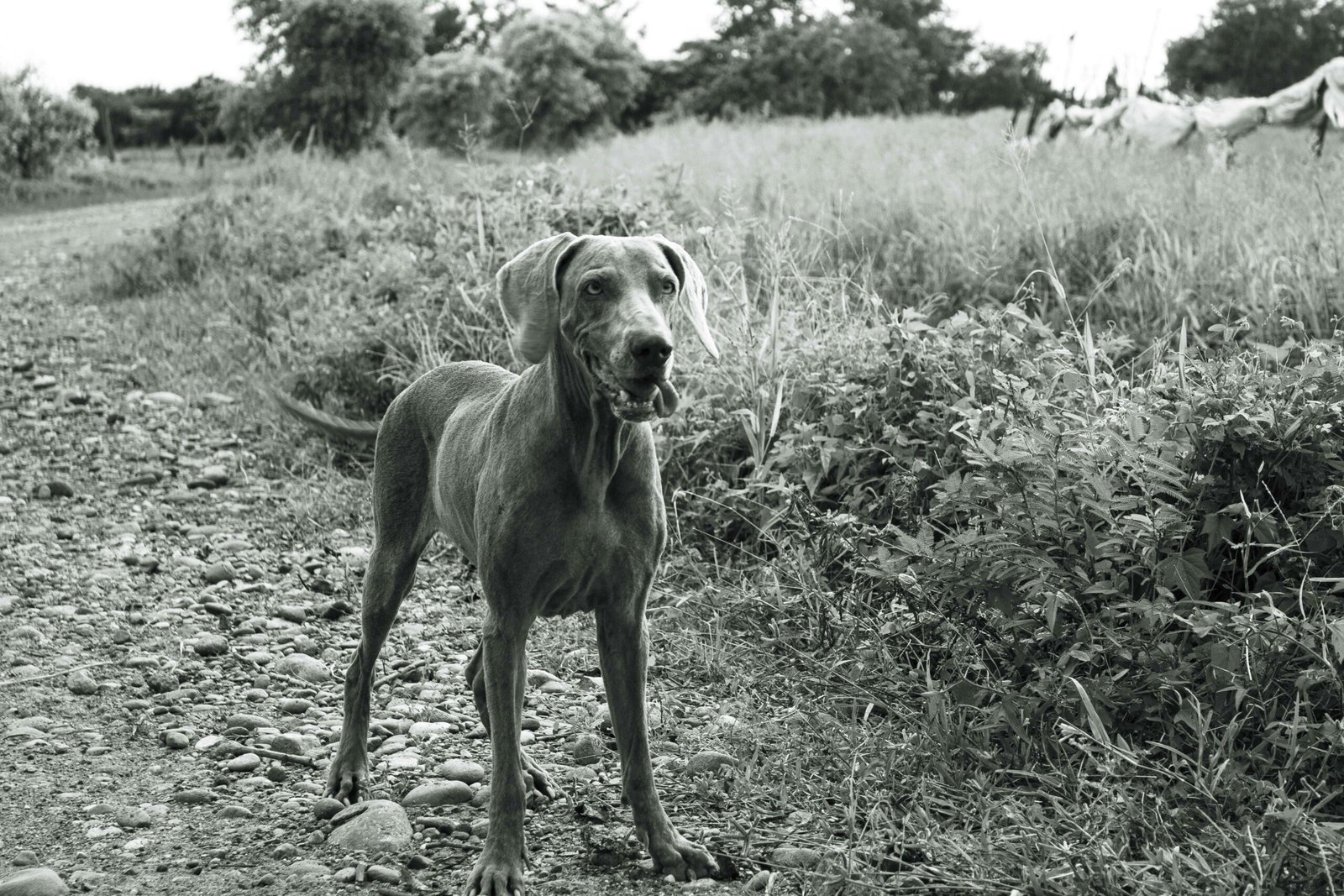My Dog Is Limping but Shows No Sign of Pain: What Could It Be?
Seeing your dog limp can be alarming, especially when they don’t seem to show any signs of pain. While limping is often associated with discomfort or injury, there are several reasons why your dog might exhibit this behavior without obvious distress. From minor issues like overexertion to more serious conditions like joint problems or neurological concerns, understanding the potential causes is crucial for ensuring your furry friend’s well-being. In this blog post, we’ll explore why your dog might be limping, what you can do at home, and when it’s time to consult a veterinarian. Let’s dive in and decode this puzzling behavior together.
Common Causes of Limping Without Pain
Dogs may limp for a variety of reasons, even if they don’t appear to be in pain. Here are some common explanations:
Overexertion
Too much exercise or strenuous activity can strain muscles or joints, leading to temporary limping.Minor Sprains
A slight sprain or strain might cause limping without significant discomfort, especially in young, active dogs.Foreign Objects
Small objects like thorns, pebbles, or splinters lodged in their paw pads can cause limping without noticeable pain.Arthritis or Joint Issues
Early stages of arthritis or joint degeneration may cause limping without overt signs of pain.Nerve-Related Problems
Nerve damage or compression can lead to limping, as the dog may not feel pain but struggles with coordination.
While these causes are generally manageable, it’s important to monitor your dog closely to rule out more serious conditions.
Signs That Accompany Limping Without Pain
Even if your dog isn’t showing obvious signs of pain, other subtle behaviors can provide clues about the underlying issue. Here’s what to look for:
Changes in Gait
Your dog may favor one leg or walk differently, indicating discomfort or imbalance.Reluctance to Move
If your dog hesitates to run, jump, or climb stairs, it could signal an underlying problem.Swelling or Redness
Check their legs, paws, or joints for any visible swelling, redness, or irritation.Licking or Chewing
Dogs often lick or chew at areas that bother them, even if they aren’t vocalizing pain.Behavioral Changes
Subtle shifts in behavior, such as increased restlessness or irritability, may accompany limping.
By observing these signs, you can gather valuable information to share with your veterinarian and better understand your dog’s condition.
Check this guide 👉Treating Dog Limping in the Front Leg: Best 7 Health Tips!
Check this guide 👉Why Is My Dog Limping After Laying Down? Best 7 Expert Tips!
Check this guide 👉Why Your Dog is Limping but Not Crying: Best 7 Health Tips!

Symptom | Possible Cause |
|---|---|
Overexertion | Temporary muscle fatigue or strain |
Foreign Objects | Thorns, pebbles, or debris in paw pads |
Arthritis or Joint Issues | Degenerative joint disease or inflammation |
Nerve-Related Problems | Nerve damage or compression |
Behavioral Changes | Stress, anxiety, or hidden discomfort |
What You Can Do at Home to Help Your Dog
Before rushing to the vet, there are steps you can take at home to assess and potentially alleviate your dog’s limping. Here’s how to proceed:
Inspect Their Paws
Carefully check your dog’s paws for foreign objects, cuts, or swelling that might explain the limping.Rest and Limited Activity
Encourage your dog to rest and avoid activities that could worsen the issue, such as running or jumping.Apply a Cold Compress
If you notice swelling, gently apply a cold compress to reduce inflammation.Monitor Progress
Keep an eye on your dog’s condition over 24-48 hours to see if the limping improves on its own.Avoid Self-Diagnosis
Refrain from giving medications or treatments without consulting a professional.
These steps can help you manage mild cases of limping, but remember that professional advice is essential for persistent or worsening symptoms.
When to Seek Veterinary Attention
While some cases of limping resolve on their own, others require prompt veterinary care. Here’s when you should consult a professional:
Persistent Limping
If the limping doesn’t improve within 48 hours, it’s time to seek veterinary advice.Visible Injury
Open wounds, broken nails, or severe swelling warrant immediate attention.Difficulty Bearing Weight
If your dog cannot put weight on the affected limb, it may indicate a fracture or ligament tear.Unexplained Behavioral Changes
Sudden changes in appetite, energy levels, or mood may point to an underlying health issue.Age or Breed-Specific Concerns
Older dogs or breeds prone to joint problems (e.g., German Shepherds, Labradors) should be evaluated promptly.
Timely veterinary intervention can prevent complications and ensure your dog receives the care they need.
Understanding the Role of Age in Limping
A dog’s age can significantly influence the likelihood and cause of limping. Puppies, adult dogs, and seniors may experience limping for different reasons. Here’s how age plays a role:
Puppies
Rapid growth can lead to conditions like panosteitis, often referred to as “growing pains,” which causes temporary limping.Adult Dogs
Active adult dogs are more prone to injuries like sprains, strains, or torn ligaments due to their high energy levels.Senior Dogs
Older dogs are at higher risk for conditions like arthritis, hip dysplasia, or degenerative joint disease, which can cause persistent limping.Breed-Specific Concerns
Certain breeds, such as large or giant breeds, are genetically predisposed to joint issues that worsen with age.Preventive Measures
Regular exercise, weight management, and joint supplements can help reduce the risk of age-related limping.
Understanding how age affects limping allows you to tailor care and prevention strategies to your dog’s life stage.
How Environmental Factors Contribute to Limping
Sometimes, external factors in your dog’s environment can lead to limping without obvious pain. Here’s how surroundings might play a role:
Uneven Surfaces
Walking or running on rough terrain can strain muscles or joints, especially if your dog isn’t used to it.Cold Weather
Cold temperatures can stiffen joints, particularly in dogs with arthritis or other joint conditions.Slippery Floors
Hardwood or tile floors can cause dogs to slip, potentially leading to minor injuries or muscle strains.Overexposure to Heat
Hot pavement can burn paw pads, causing discomfort and limping even if your dog doesn’t vocalize pain.Exposure to Chemicals
Harsh chemicals like de-icing salts or lawn treatments can irritate paws, leading to limping or licking.
By addressing these environmental factors, you can create a safer and more comfortable space for your dog to thrive.
Alternative Therapies for Managing Limping
If your dog’s limping persists despite rest and veterinary care, alternative therapies may provide additional relief. Here are some options worth considering:
Physical Therapy
Tailored exercises can strengthen muscles and improve mobility, especially for dogs recovering from injuries.Hydrotherapy
Swimming or water-based exercises reduce stress on joints while promoting healing and fitness.Massage Therapy
Gentle massage can relieve muscle tension, improve circulation, and reduce discomfort.Acupuncture
This traditional Chinese medicine technique may help alleviate pain and improve nerve function in dogs.Supplements and Diet Changes
Adding omega-3 fatty acids, glucosamine, or chondroitin to your dog’s diet can support joint health and reduce inflammation.
Exploring these therapies under professional guidance can complement traditional treatments and enhance your dog’s recovery.
Frequently Asked Questions About Limping Without Pain
Why is my dog limping but not crying or whining?
Dogs may not vocalize pain due to their stoic nature, but limping still indicates discomfort or an underlying issue.
Can limping go away on its own?
Minor cases, such as overexertion or small injuries, may resolve with rest, but persistent limping requires veterinary evaluation.
How can I tell if my dog has arthritis?
Look for stiffness after rest, difficulty rising, or reluctance to engage in physical activities.
Should I restrict my dog’s movement while they’re limping?
Yes, limiting activity can prevent further injury and allow healing to occur.
Can limping be a sign of something serious?
Yes, limping can indicate fractures, nerve damage, or systemic conditions like Lyme disease, so professional assessment is key.
Understanding and Supporting Your Limping Dog
Seeing your dog limp can be concerning, but staying calm and observant is the first step toward helping them. Whether it’s a minor issue like a strained muscle or something more serious like arthritis or nerve damage, understanding the potential causes allows you to act quickly and effectively. By monitoring your dog’s behavior, providing rest, and seeking veterinary care when needed, you can ensure they recover fully and return to their happy, active selves. Remember, your dog relies on you to advocate for their health—so trust your instincts and never hesitate to reach out to a professional. After all, every wagging tail deserves a pain-free life!
Why Is My Cats Second Eyelid Showing? Best 7 Expert Tips! Understand causes, health signs, and how to respond when your cat’s third eyelid becomes visible.
How Do I Know If My Cat Died Peacefully? Best 7 Expert Tips! Discover the quiet signs of a peaceful feline passing and find comfort in their final moments.
Cat Allergy Eyes: Best 7 Expert Tips! Discover why your eyes react to cats and learn proven strategies for relief—without giving up your feline friend.
Why Do Abyssinian Cat Colors Matter? Best 7 Expert Tips! Discover the genetics, rare hues, and care secrets behind Abyssinian coat colors for a healthier, happier cat.





